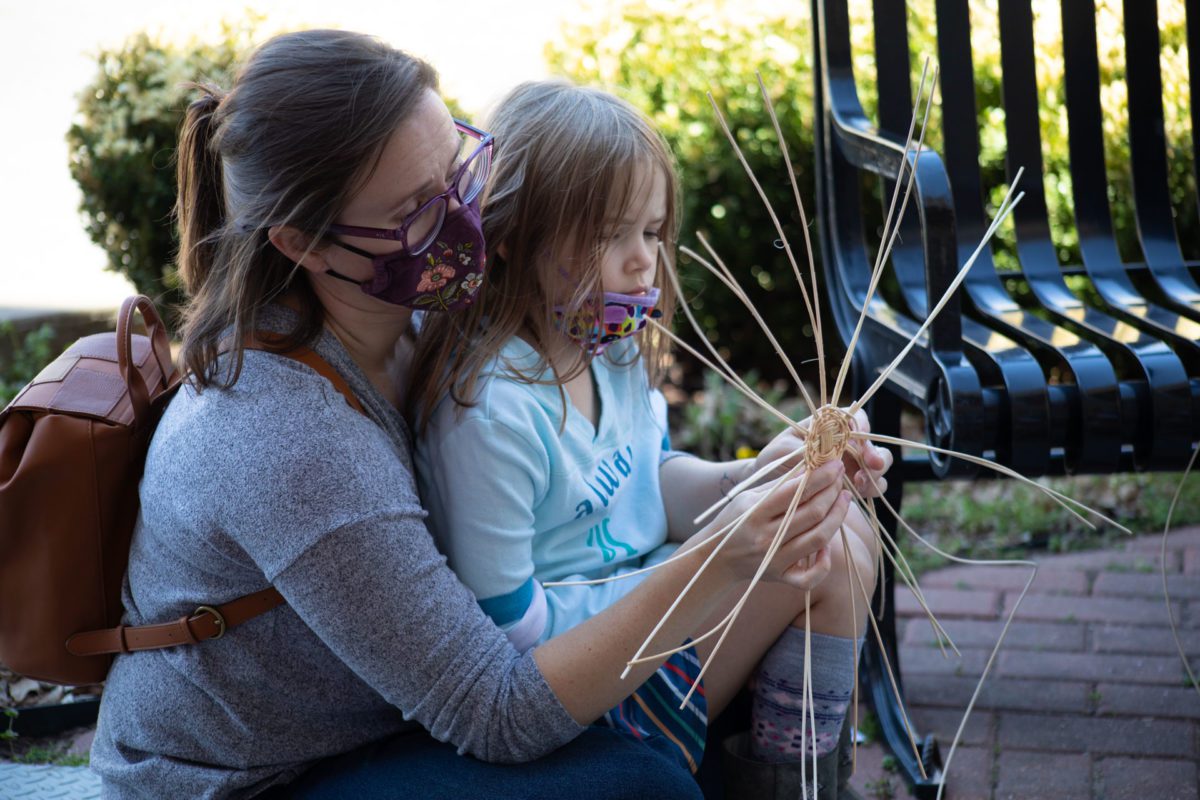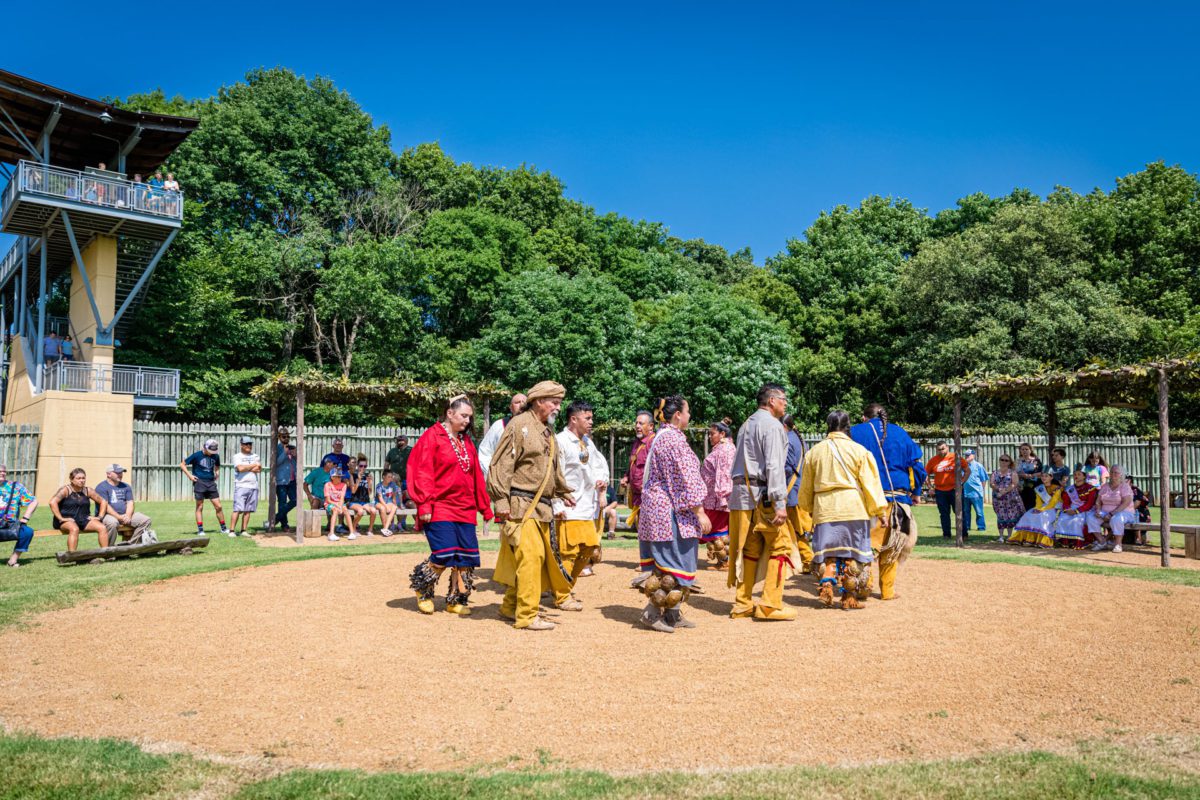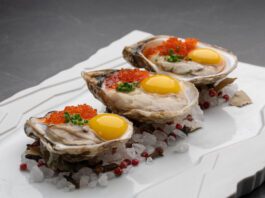
What’s New?
The Oklahoma economy is booming, thanks in part to a variety of infrastructure projects spearheaded by Native American Nations. For example, the Choctaw Nation broke ground in June on a $238 million casino and resort in southeast Oklahoma.
Choctaw Landing will employ about 600 people in Hochatown, near Broken Bow Lake, says Janie Dillard, senior executive officer of the Division of Commerce of the Choctaw Nation. The resort will feature 600 slot machines, eight table games, a 100-room hotel, an outdoor entertainment venue, a 10,000-foot convention space and a pool with cabanas, says Dillard. A December 2023 opening is planned.
“People want to be able to see and enjoy nature,” she says. “It’s only a couple of miles from the lake. We will build relationships with vendors at the lake and golf course to accommodate our guests.”
The Cherokee Nation is focused these days on healthcare infrastructure, says Principal Chief Chuck Hoskin Jr.
A new $400 million Hastings Hospital in Tahlequah “will be state-of-the-art and allow us to scale up some of the services we provide,” he says.
A health center in Salina will be replaced with a $35 million outpatient facility that will triple its capacity. The tribe also plans to build “the first drug treatment center for Cherokees by Cherokees,” near Tahlequah, says Hoskin.
The Citizen Potawatomi Nation expects to start production in September at Sovereign Pipe Technologies, says James Collard, director of economic development for the tribe.
The tribal-owned factory at Iron Horse Industrial Park in Shawnee will produce high-density polypropylene pipe. The 700-acre industrial park is a magnet site of the Port of Greater Oklahoma City’s Foreign Trade Zone #106. It’s also a trans-loading facility and invites tenants for manufacturing, warehousing and distribution operations. More information is at ironhorsecpn.com.
The American Indian Chamber of Commerce of Oklahoma has been working on Indigenous-to-Indigenous partnerships across the world, says president Bailey Walker. An Australian company, Woodside Energy, has leased land in Ardmore for a hydrogen plant. Production of hydrogen as a commercial fuel is estimated to begin in 2025.
Bailey recently spent two weeks in Australia meeting with Indigenous business owners.
“Natives have always been traders,” says Walker. “Australian Indigenous nations have very similar cultural practices.”
Educating the Youth
Several tribes in Oklahoma count on the Johnson-O’Malley Program to help students have a richer educational experience. The federally-funded program serves 75 school districts that are within the boundaries of the Choctaw Reservation, says Shane Haddock, senior manager of the program.
Campus Indian Education Committees, which must include parents, apply for grants administered by the tribes to supplement the educational needs of Native students. Eligible expenditures include school supplies, book fairs, math tutors, technology upgrades, cultural activities, field trips and academic incentives.
Haddock says the Choctaw Nation allocates $65 per Native student per school year.
“We have approximately 80 tribes represented within our student population,” he says. “This is about giving the Native American students more access and more opportunity.”
The JOM program also allows Cherokee students to increase their knowledge of Cherokee history and tribal government, as well as to expand cultural knowledge through competitions in art, writing, the Cherokee Challenge Bowl and the Cherokee Language Bowl.
Language Retention
Joshua Hinson is crazy about his job as director of the language revitalization program for the Chickasaw Nation, and Justin Neely is equally thrilled to be director of language for the Citizen Potawatomi Nation.
“I’ve been doing this for 22 years,” says Hinson. “Being able to work with my fellow language learners is the privilege of a lifetime.”
Hinson is helping Gov. Bill Anoatubby carry out his vision for 2022-2032 as “Let’s Speak Chickasaw: A Decade of Chickasaw Language.”
Hinson says the language “is the most fundamental, essential expression of Chickasaw identity. People become greatly diminished if they lose their language.”
Fewer than 35 native speakers remain, Hinson says, and the goal is to train 35 new conversationally proficient speakers by the end of the decade. The Chikasha Academy Adult Immersion Program pays tribal citizens to learn the language.
The six people chosen for the first three-year course study together six hours a day, five days a week, with another two hours a day of independent study.
“They are paid a competitive full-time wage,” says Hinson. “At the end, of course, we want to move them into language positions with the tribe.”
Neely has held the post for 17 years, “and I still have the same level of passion I had when I got here.” Currently, his department has been knee-deep in vintage cartoons and situation comedies.
The Beverly Hillbillies, the Andy Griffith Show and cartoons such as Popeye, Daffy Duck and Woody Woodpecker are now voiced and captioned in Chickasaw and shown on the tribe’s YouTube channels.
“We’ve been spending a lot of time taking public domain films and putting them into the language,” says Neely. “We are a big believer in making the language accessible in as many ways as possible.”
In-person language classes are also transmitted by Zoom or Facebook Live – helpful for tribal citizens who live in other states.
“We are a critically endangered language,” says Neely. “We are down to fewer than five people who grew up as native speakers.”
Federal Appointments
Native Americans, many with Oklahoma ties, have made headlines by receiving Biden-administration federal appointments.
Deb Haaland, a member of the Pueblo of Laguna, was named Secretary of the Interior, the first Native to serve as a cabinet secretary. Muscogee (Creek) Nation Second Chief Del Beaver watched Haaland’s televised Senate confirmation hearing.
“It’s hard to put into words how much pride [I] felt,” Beaver told a National Public Radio reporter. “I have two daughters. And I can point to her and say, hey … that can be you.”
Charles F. Sams III, a citizen of the Confederated Tribes of the Umatilla Indian Reservation, who holds a master’s degree in Indigenous peoples’ law from the University of Oklahoma, is now director of the National Park Service.
Idabel native Janie Simms Hipp, Chickasaw, was named general counsel of the U.S. Department of Agriculture. Hipp “has dedicated her career to promoting the important role of women and First Americans in advancing food security, sustainable agriculture and equitable agriculture policy,” according to the Chickasaw Nation.
Robert Anderson, a citizen of the Bois Forte Band of the Minnesota Chippewa Tribe, is now a solicitor of the U.S. Department of the Interior.
Jaime A. Pinkham of the Nez Perce Tribe was appointed principal deputy assistant secretary of the Army for Civil Works. His duties include conservation and development of water and wetland resources, flood control and aquatic ecosystem restoration.
Choctaw Chief Gary Batton is a primary member of the Interior Secretary’s Tribal Advisory Committee for the Eastern Oklahoma Region, with Beaver as alternate member.
For the Southern Plains Region, Pawnee Chairman Walter Echo-Hawk is a primary member, and Cheyenne and Arapaho Gov. Reggie Wassana is the alternate member.
Which One’s Right?
Two years before it opened in 2021, officials changed the name of a museum designed to showcase Oklahoma’s Native heritage: The American Indian Cultural Center and Museum would now be called the First Americans Museum.
Museum officials said the former name was unwieldy and that the term “Indians” was historically inaccurate.
The way First Americans have been referred to has changed over time, the Oklahoma City museum explains on its website.
“Native Americans” first emerged as a replacement for “Indians,” but many nationalities born in America also considered themselves to be native Americans. A shift to “American Indians” was embraced to infuse new layers of meaning to the term. Younger generations have preferred the terms “Native” or “Indigenous.”
Native Knowledge 360 Degrees, an educational outreach of the National Museum of the American Indian, says all the terms are acceptable, but Native people prefer to be called by their specific tribal names when possible.
The Power of Traditions
The Green Corn Ceremony “is an annual renewal of life,” says David Frank, tribal historic preservation officer for the Thlopthlocco Tribal Town. “It’s a time to thank the Creator for the abundance of the harvest. We dance all night long around the fire. When you go to the ceremonial ground it’s like going to church. All things should be forgiven. You should not go with any animosity.”
Thlopthlocco Tribal Town is a federally-recognized township of the Muscogee (Creek) Nation, Frank says, and the language and traditions are the same.
Traditions allow tribes to celebrate and pass down culture. Some traditions remain strong, Frank says, but society has taken a toll on others, such as storytelling.
“The conveniences of modern society have caused this loss,” he says. Before electronic communication, “when it was time to be entertained, there was always somebody who had this gift of storytelling.”
Chickasaw citizens converted to Christianity in large numbers after the Civil War, says Hinson. Ironically, it was a cultural change that helped keep traditions alive.
As Indian Christian churches were constructed, Hinson says, “they recreated the church in form and function to reflect ancestral ideas about how a ceremonial space should be. Churches were built near water. Arbors or camp houses were built all around the churches. They were representations of town structures.”
Choctaw converts helped missionaries translate the Bible, and Chickasaw and Choctaw are similar languages.
“The church is where the language survived,” says Hinson.
Traditional foods remain popular, Frank says, including wild onions, grape dumplings, sour cornbread and a parched corn drink.
Stickball is still played during the final ceremonial gathering of the season.
“The men used to settle disputes this way,” says Frank. “They might play for a hunting area, instead of fighting. People used to lose their lives playing this game. Women weren’t allowed to do anything where they might lose their lives, because they were the givers of life.”
Traditional arts and crafts remain strong among the Muscogee, Frank says, including dugout canoes, sculpting, fine art, beadwork, basket-making and rattles for dancing.
Chickasaw ceremonial dances were common in Oklahoma through the 1930s, Hinson says, but many grounds were “put to sleep” prior to World War II.
The dances and the ball play moved to people’s homes, as did healing ceremonies.
“In the early 1990s, people started coming up with ideas to re-institute the dances,” Hinson says. “In 1994, they created a new ground at Kullihoma for ceremonial and social dances. They have danced every summer except when they knocked off for COVID-19.”







